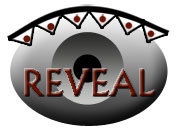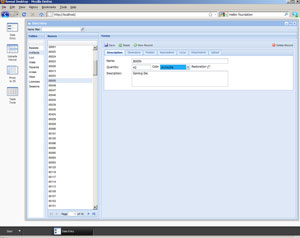REVEAL (Reconstruction and Exploratory Visualization: Engineering meets ArchaeoLogy) |
 National Science Foundation Aknowledgement:
National Science Foundation Aknowledgement:
This material is based upon work supported by the National Science Foundation under Grant No.0808718
http://www.nsf.gov/awardsearch/showAward.do?AwardNumber=0808718
III-CXT-Core Computer Vision Research: Promoting Paradigm Shifts in Archaeology.
Disclaimer:
Any opinions, findings, and conclusions or recommendations expressed in this material are those of the author(s) and do not necessarily reflect the views of the National Science Foundation.
Free is Good
REVEAL is a free software solution that can ensure that excavations are fully documented and that the record is accurate. To obtain the free full installation kit, just go to http://sourceforge.net/projects/revealanalyze/ and click on the big green Download button. But we encourage you to read further before proceeding.REVEAL is a single platform for:
- integrating all data types (including plans, photographs, 3D models, and tabular database information)
- automatically generating 3D models of trenches, architecture, and in situ artifacts
- for allowing real-time hypothesis testing as excavations unfold
- for creating publication-ready output
Site directors really need to use only one complete package that keeps things digital from acquisition to publication, integrates all data types, and can be used across different excavations with minimal modification
The setting for this VIZIN endeavor is any archaeological excavation and related fieldwork situation where data integration, hypothesis testing, access to free software, or automated creation of 3D computer models are important.
For archaeologists, traditional excavation methods can be frustrating as fieldteams struggle to ensure that everything is being noted properly, dug efficiently, and that inferences about the evidence allow for a successful and full interpretation of the site’s history. Further, expenses need to be kept low and increasing dependence on technology such as laser scanners can be a drain on finances.
Automated computer-based documentation and analysis tools would seem much more beneficial, since they can be more accurate and cost effective, saving time and ensuring that all finds and their context are appropriately and thoroughly recorded. If designed properly, with safeguards in place, new digital field data acquisition systems can enable new types of hypothesis testing, new insight into the past, and new visualizations that in turn can lead to a paradigm shift in how excavations are managed and evidence disseminated.
|
For example, interactive 3D computer models (such as virtual reality worlds) permit more innovative inquiries than are possible when using traditional 2D paper-based media. Afterall, the past happened in 3D, so that’s the way it should be studied. Only then can we accurately envision historic places and events. But, projects that the use detailed and precise interactive 3D computer models presumably rely on excavations that have already happened and that the virtual environments that re-create the past are using a complete record of the excavated evidence and that the data are correct. Those are iffy assumptions. REVEAL sets out to correct that process. |
click on images to enlarge |
Humble Beginnings
REVEAL began as a collaboration among VIZIN, Brown University’s Division of Engineering, Laboratory for Man/Machine Systems, and the University of North Carolina, Charlotte's Department of Electrical and Computer Engineering. The project uses computer-vision/pattern-recognition/machine-learning research with special applications to archaeology and the humanities.
The core programming and development phase of the project has been completed. The software is being used by archaeological sites around the world. Please see the Solution section for more information on the future of this project, how to get tech support, and where to download the installation kit.
Watch the video: http://www.youtube.com/watch?v=1OJkiEMiMSg
Reference
Page Created: August 20, 2012
Page Updated: August 20, 2012
URL:
Page Author: The Institute for the Visualization of History
